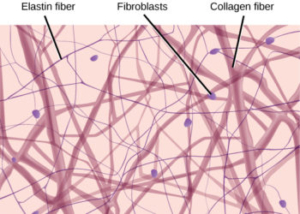Connective tissue disorders varies depending on the specific condition and its severity. Here are some general approaches:
- Medications: Depending on the underlying condition, medications may be prescribed to manage symptoms and slow down the progression of the disease. For example, nonsteroidal anti-inflammatory drugs (NSAIDs) can help reduce pain and inflammation associated with connective tissue disorders such as rheumatoid arthritis or lupus. In autoimmune disorders, immunosuppressant drugs may be prescribed to suppress the immune system’s response.
- Physical Therapy: Physical therapy can be beneficial for improving flexibility, strength, and mobility in individuals with connective tissue disorders. A physical therapist can design a personalized exercise program to help manage symptoms, prevent complications such as joint deformities, and improve overall function.
- Occupational Therapy: Occupational therapy focuses on helping individuals with connective tissue disorders perform daily activities more easily and independently. Occupational therapists can provide adaptive equipment, recommend ergonomic modifications, and teach energy-conservation techniques to minimize fatigue and joint stress.
- Lifestyle Modifications: Adopting a healthy lifestyle can help manage symptoms and improve quality of life for individuals with connective tissue disorders. This may include maintaining a balanced diet, getting regular exercise, managing stress, avoiding smoking, and limiting alcohol consumption.

- Joint Protection Techniques: For individuals with conditions affecting the joints, such as osteoarthritis or rheumatoid arthritis, using joint protection techniques can help reduce pain and preserve joint function. This may involve using assistive devices (e.g., braces, splints), avoiding repetitive or high-impact activities, and practicing proper body mechanics.
- Surgery: In some cases, surgical intervention may be necessary to address complications or severe joint damage caused by connective tissue disorders. Common surgical procedures include joint replacement surgery for severely damaged joints, tendon repair or reconstruction, and synovectomy (removal of inflamed synovial tissue) in conditions like rheumatoid arthritis.
- Biologic Therapies: Biologic therapies, such as biologic response modifiers or monoclonal antibodies, may be used to target specific molecules involved in the inflammatory process in autoimmune connective tissue disorders. These medications can help reduce inflammation, slow disease progression, and improve symptoms in conditions like rheumatoid arthritis, systemic lupus erythematosus, or scleroderma.
- Complementary and Alternative Therapies: Some individuals find relief from connective tissue disorder symptoms through complementary and alternative therapies such as acupuncture, massage therapy, yoga, or dietary supplements. However, it’s essential to discuss these options with a healthcare provider to ensure they are safe and appropriate for your condition.
